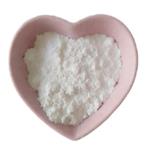The introduction of Cetylpyridinium chloride monohydrate
General description
Cetylpyridinium chloride monohydrate is a hydrate. It contains a cetylpyridinium chloride. Cetylpyridinium Chloride is the chloride salt form of cetylpyridinium, a quaternary ammonium with broad-spectrum antimicrobial activity. Upon topical administration, cetylpyridinium chloride is positively charged and reacts with the negatively charged microbial cell surfaces, thereby destroying the integrity of the cell membrane. This causes leakage of intracellular components leading to microbial cell death.
Figure 1 the chemical structure of Cetylpyridinium chloride monohydrate
Application and Pharmacology
1.The product is mainly a cationic disinfectant containing nitrogen. Under the same use conditions, the killing rate of the product to heterotrophic bacteria, iron bacteria and sulfate reducing bacteria is better than dodecyl dimethyl benzyl ammonium chloride, dodecyl dimethyl benzyl ammonium bromide and other commonly used quaternary ammonium salt bactericides. The feeding material adopts impact feeding, and the general concentration is 20 ~ 80ml / L.
2.Associative surfactants systems involving polar oils have recently been shown to stabilize immiscible liquids by forming nanostructures at the liquid interface and have been used to print soft materials. Although these associating surfactant systems show great promise for creating nanostructured soft materials, a fundamental understanding of the self-assembly process is still unknown. In this study, a ternary phase diagram for a system of cationic surfactant cetylpyridinium chloride monohydrate (CPCl), a polar oil (oleic acid), and water is established using experiment and simulation, to study the equilibrium phase behavior. A combination of visual inspection, small-angle X-ray scattering (SAXS), and rheological measurements was employed to establish the phase behavior and properties of the self-assembled materials. Dissipative particle dynamics (DPD) is used to simulate the formation of the morphologies in this system and support the experimental results. The ternary phase diagram obtained from the simulations agrees with the experimental results, indicating the robustness of the computational simulation as a supplement to the mesoscale experimental systems. We observe that morphological transitions1.
3. the interactions between superdisintegrants and drugs with different physicochemical characteristics, which may affect the in-vivo absorption e.g. after mucosal administration. The binding of sodium salicylate, naproxen, methyl hydroxybenzoate (methylparaben), ethyl hydroxybenzoate (ethylparaben), propyl hydroxybenzoate (propylparaben), atenolol, alprenolol, diphenhydramine, verapamil, amitriptyline and cetylpyridinium chloride monohydrate (CPC) to different superdisintegrants (sodium starch glycolate (SSG), croscarmellose sodium (CCS) and crospovidone) and one unsubstituted comparator (starch) was studied spectrophotometrically. An indication of the in-vivo effect was obtained by measuring the interactions at physiological salt concentrations. SSG was investigated more thoroughly to obtain release profiles and correlation between binding and ionic strength. The results showed that the main interactions with the anionic hydrogels formed by SSG and CCS were caused by ion exchange, whereas the neutral crospovidone exhibited lipophilic interactions with the non-ionic substances. The effect of increased ionic strength was most pronounced at low salt concentrations and the ion exchange interactions were almost completely eradicated at physiological conditions. The release profile of diphenhydramine was significantly affected by the addition of salt. It was thus concluded that the choice of buffer was of great importance for in-vitro experiments with ionic drugs. At physiological salt concentrations the interactions did not appear to be strong enough to influence the in-vivo bioavailability of any of the drug molecules2.
Synthesis
In the mixture of 48ml SOCl2 and 0.3mg hconme2, the temperature was controlled at 30 ~ 35 ℃ under stirring, and 81g cetyl alcohol was dropped. After dropping, the mixture is boiled for 30min, cooled and distilled to obtain 138 ~ 140 degrees (270pa pressure), which is chlorocetane with a yield of 92.2%. 80g chlorocetane and 32g dry pyridine oil are heated to 150 ~ 160 degrees and reacted for 12 ~ 15h. After the reaction, 80ml acetone is added, the mixture is dissolved in water bath and then cooled to obtain the product with a yield of 94%. The melting point is 87 ~ 88 degrees.
Safety
The oral LD50 of rats was 200 mg / kg. The product is poisonous if swallowed. When using, avoid inhaling the dust of the product and avoid contact with skin and eyes. After the product comes into contact with the skin, wash it immediately with a large amount of specified liquid. Cetylpyridinium chloride, cetyltrimethylammonium and tetradecyltrimethylammonium were adsorbed on montmorillonite . The majority of nanoparticles containing organic moieties used in food industry have very limited toxicology data.
Reference
1.Honaryar H, LaNasa JA, Hickey RJ, Shillcock JC, Niroobakhsh Z. Investigating the morphological transitions in an associative surfactant ternary system. Soft Matter. 2022 Mar 30;18(13):2611-2633. doi: 10.1039/d1sm01668g. PMID: 35297452.
2.Fransén N, Morin M, Björk E, Edsman K. Physicochemical interactions between drugs and superdisintegrants. J Pharm Pharmacol. 2008 Dec;60(12):1583-9. doi: 10.1211/jpp/60.12.0003. PMID: 19000362.
);You may like
See also
Lastest Price from Cetylpyridinium chloride monohydrate manufacturers

US $41.00-35.00/kg2024-05-10
- CAS:
- 6004-24-6
- Min. Order:
- 1kg
- Purity:
- 99.99%
- Supply Ability:
- 100Tons

US $18.00-18.00/kg2024-05-09
- CAS:
- 6004-24-6
- Min. Order:
- 1kg
- Purity:
- 99.9
- Supply Ability:
- 5000


